How to Clean Roman Shades Like a Pro
Elegant and space-saving, Roman Shades are ideal for window treatments, but their soft pleats and fabric surfaces are prone to collecting dust, clinging to pet hair, and occasional stains. This article discusses how to clean Roman shades from daily dusting, localized stain removal, to full cleaning and professional dry cleaning.
NAVIGATION
- Why Clean Roman Shades?
- Tools and Supplies You'll Need
- Quick Dusting (No Removal)
- Spot Cleaning Roman Shades Stains
- Machine Washing: When & How
- Dry Cleaning & Pro Help
- Cleaning Blackout or Thermal-Lined Roman Shade
- Corded & Motorized Roman Shades: Safety-First Cleaning
- Odor Removal & Fabric Refresh
- Troubleshooting Common Problems
- When to Replace Instead of Clean
Why Clean Roman Shades?
Dust and moistened oils in the air hold onto fabric faster than one expects. Over time, untreated Roman shades can darken, lose fiber strength, and smell. If you understand how to properly clean your Roman shades and care for them, you will keep them beautiful, looking for years while extending their service life! It is recommended to perform mostly light maintenance (pat, vacuum, or partial wipe) approximately every 1–2 months for many households. It is also important to wash or dry clean (professionally) the shades 1–2 times per year. You can always adjust based on use, pets, or how close they are to the kitchen. Shades in homes with high traffic use, like the kitchen, are on the fabric more often and should be cleaned more often to minimize stubborn grease and dust buildup.

Tools and Supplies You’ll Need
-
Vacuum with upholstery brush or handheld vacuum
-
Soft-bristle brush or microfiber duster
-
Mild liquid detergent (no optical brighteners) or fabric-safe upholstery cleaner
-
White cotton cloths or microfiber towels
-
Spray bottle (water; add diluted detergent when needed)
-
Large flat surface + towels (for laying shades flat)
-
Optional: steam cleaner (low setting — test first)
-
Protective gloves (for stubborn stains)

Quick Dusting (No Removal)
You can remove most loose dust without tools. Lower the shade fully, then:
-
Run a microfiber duster horizontally along the face and folds, paying attention to creases where dust collects.
-
Use the vacuum’s upholstery brush on a low suction setting to gently lift remaining particles.
This is ideal for how to clean Roman shades when you want to clean Roman shades without taking them down, avoiding stress on lift cords, and works across a lot of Roman shade styles.
Spot Cleaning Roman Shades Stains
Spot cleaning is the safest first step for spills or localized marks when learning how to clean Roman shades stains:
-
Test a hidden area with your cleaning solution (1 tsp mild detergent + 1 cup lukewarm water). If color runs, stop and seek professional cleaning.
-
Blot the stain from the outside edge toward the center; never rub, as rubbing spreads or embeds the pigment, and hard rubbing can damage the fabric.
-
Use a separate lightly dampened white cloth to lift the stain; swap cloths frequently until no more residue appears.
-
Pat dry with a clean towel and allow to air-dry fully with the shade lowered to preserve folds.
Machine Washing: When & How
Not all Roman shades are machine washable. Be sure to check the manufacturer's wash label or product page first. If the fabric and construction allow, follow the steps below on how to clean Roman shades at home:
-
Remove any removable hardware (such as rings, dowels, or trim) and remove shades from the headrail.
-
Flatten Roman shades, gently fold them, and place them in a large mesh laundry bag or pillowcase to protect the pleats from pulling.
-
Select gentle wash mode and use cold water and a small amount of mild detergent; avoid bleach and fabric softener.
-
Remove from the wash immediately, while still wet, and arrange pleats as they are and lay flat to dry to retain their shape. Do not use the dryer unless expressly permitted by the wash label.
-
Many customers prefer to have delicate or heavy Roman shades professionally dry cleaned as a more secure method of cleaning.
Dry Cleaning & Pro Help
Certain fabrics, linings (like blackout or thermal layers), and embellished shades should only be dry-cleaned. If your Roman shades contain:
-
Metallic threads, sequins, or delicate trims;
-
Multiple bonded layers (thermal or blackout linings);
-
Persistent, set-in stains that resist spot treatment, professional cleaning preserves materials and mechanisms—an important consideration when learning how to clean Roman shades. When in doubt, contact a trusted cleaner and describe the shade components.
Cleaning Blackout or Thermal-Lined Roman Shade
Blackout and thermal linings require extra caution because heat and harsh detergents can warp their functional backing. For these, it’s important to understand how to clean Roman shades properly to maintain their structure and function:
-
Avoid soaking; use spot-cleaning or low-moisture cleaning methods.
-
Test steam on a hidden area if you plan to use a hand steamer; keep steam brief and at a distance.
-
If the backing delaminates or wrinkles, consult the manufacturer or a professional to avoid permanent loss of insulation.
Corded & Motorized Roman Shades: Safety-First Cleaning
Corded shades must be handled carefully to protect the lift mechanism and maintain child safety compliance. For corded or motorized Roman shades, here’s how to clean Roman shades properly:
-
Disconnect power or batteries before cleaning motorized shades.
-
Avoid wet-cleaning near the headrail; use vacuuming and spot-cleaning below the headrail level.
-
After cleaning, cycle the shade through a full up/down motion to confirm smooth operation.
Odor Removal & Fabric Refresh
For mild odors, airing is often enough. Take the shades down on a breezy day when it is overcast and hang them outside (not in direct sunlight to avoid fading). Now, about how to clean Roman shades for those deeper odors:
-
Lightly mist the fabric with a diluted mixture of water and a small amount of baking soda solution, blotting away excess moisture; allow to dry fully.
-
An ozone-free fabric refresher formulated for upholstery can be used sparingly and tested first.
Troubleshooting Common Problems
-
Persistent discoloration after cleaning: colors may have oxidized or dye-bled; professional restoration is recommended.
-
Shade puckering after washing: hang damp and smooth folds by hand to reshape; if hardware is deformed, check headrail and battens.
-
Sticky residue from cleaners: remove with a damp white cloth and repeat with plain water until residue is gone.
When to Replace Instead of Clean
When the structure or fabric of Roman shades is already damaged, continued cleaning—even with proper knowledge of how to clean Roman shades—may waste time or cause more damage. These situations suggest outright replacement:
-
Fabric fibers are visibly thin or frayed and fragile to the touch;
-
Seams are cracked, seams are broken or multiple areas require repeated mending;
-
Shrinkage, loss of shape or delamination of the lining, affecting the shading/insulation function;
-
Brittle fabrics or severe color degradation caused by prolonged sun exposure that can no longer be safely repaired;
-
Stubborn stains or odors that are difficult to remove have not improved after washing, affecting aesthetics and hygiene;
-
Hardware (drawstrings, loops, rails) so badly damaged that the cost of repair approaches that of a new replacement.
When any of the above is encountered, direct replacement of Roman shades is often a safer, more economical option that restores beauty and function. For repairable but costly situations, consult a professional first to assess whether the repair or modification is worthwhile.
Start Cleaning Your Roman Shades
Ultimately, cleaning Roman shades is a form of maintenance. Understanding the fabric composition and learning how to clean Roman shades with the correct care methods not only removes stains but also helps maintain their long-lasting beauty and performance – the elegance they bring to a room is well worth the effort.
If you still have curtains in your home, you must read this: Your Expertise Tips How to Clean Curtains.


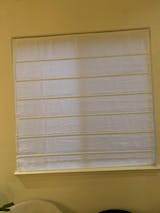
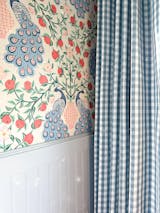

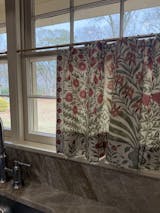






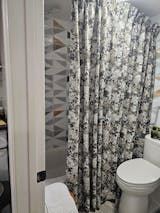
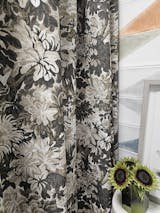
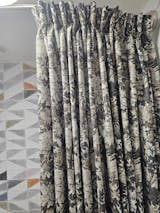
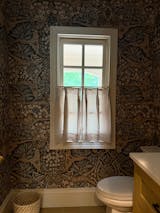
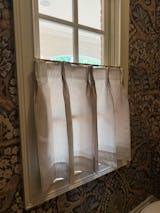
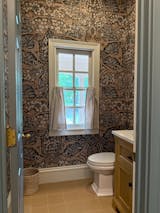


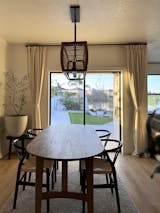

Leave a comment